EPI-NO Delphine, Delphine Plus User Manual [es]
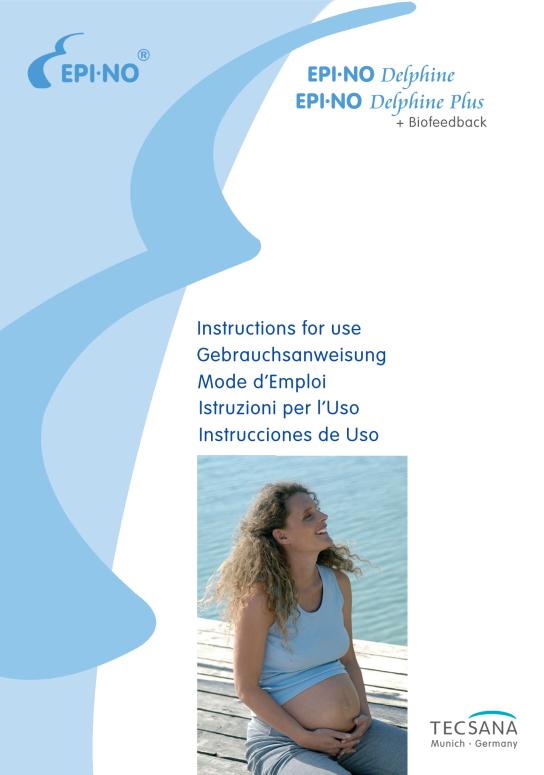

English
Deutsch
Français
Italiano
Español
Instructions For Use |
3 - 13 |
|
Gebrauchsanweisung |
14 |
- 23 |
Mode d`Emploi |
24 |
- 33 |
Istruzioni per l´Uso |
34 - 43 |
|
Instrucciones de Uso |
44 |
- 53 |
|
TECSANA GmbH |
|
|
Planegger Straße 9a |
|
|
D-81241 München |
|
|
Tel. +49 (0) 89 / 74 11 43 - 0 |
|
www.epino.com |
Fax +49 (0) 89 / 74 11 43 |
- 15 |
2

Product Description
The EPI·NO Delphine and the Delphine Plus Birth and Postnatal Trainer were designed, developed and manufactured in Germany in close co-operation with gynaecologists, midwives and pregnant women.
It consists of (1) a narrow contoured silicone
balloon, (2) a hand pump, (3) a mirror ( EPI·NO Delphine ) or a pressure display ( EPI·NO Delphine Plus),(4) an air release
valve, (5) connected by a flexible plastic tube.
EPI·NO Delphine
EPI·NO Delphine Plus
English
Indication
EPI·NO Delphine and Delphine Plus are patented and intended to be used as a Birth Trainer and a Pelvic Floor Muscle Trainer.
Applications
First, EPI·NO Delphine and Delphine Plus can gently prepare your perineum for childbirth:
Birth Preparation
Second, EPI·NO Delphine Plus exercises promote optimal postnatal recovery:
Pelvic Floor Muscle Training
Training methods
Three Stage Birth Program
( EPI·NO Delphine and Delphine Plus )
•Exercise the Pelvic Floor Muscles
To strengthen the pelvic floor muscles before birth.
•Stretch the Perineum
For the gradual stretching of the vaginal passage, the perineum and the vaginal muscles prior to birth.
•Prepare for the Birth
To train for the delivery phase of childbirth.
Postnatal Pelvic Floor Muscle
Training Program
( Note: Only EPI·NO Delphine Plus offers biofeedback )
Pelvic Floor Muscle Training
To strengthen the pelvic floor muscles following birth.
3

English
All exercises are simple and can be done
on your own in the privacy of your home. You can adjust EPI·NO Delphine and Delphine Plus training to your specific re-
quirements.
Clinical studies and practical experience
have shown the effectiveness of choosing an EPI·NO Delphine or Delphine Plus
training regimen.
During the stretching exercises for birth preparation, the pressure display ( only
EPI·NO Delphine Plus ) does not indicate the balloon size.
You can determine your training progress with the measurement template included, or use a tape measure ( A measurement of the balloon size is possible only outside the body ) .
However, during pelvic floor muscle training, your exercise progress is indicated by
the movement of the pressure display needle ( only EPI·NO Delphine Plus ) .
If a caesarean section is planned you will
not benefit from perineal stretching, however EPI·NO may still be used to ensure
effective pelvic floor muscle training.
Contraindications
You must not use EPI·NO Delphine and Delphine Plus if any of the following are
present:
•The baby is in an unusual position, or if there are identified risks making a vaginal birth impossible ( e.g. Placenta praevia ).
•There is a risk of an ascending infection (e.g. premature amniorrhexis, infection of the vagina)
•You have injuries in your genital area which have not yet healed.
•You are under the influence of alcohol or drugs.
•You have vaginal bleeding.
•You have a malignant desease in your genital area (e.g. cervical cancer)
EPI·NO Delphine and Delphine Plus should only be used under the supervision of a physician or midwife:
•If you have any nerve damage or other diseases that reduce pain sensation in your genital area.
•If you are a paraplegic
•If you have been diagnosed with Multiple Sclerosis.
•If pain killers that reduce the feeling of pain in the vaginal area have been administered .
•If you have marked varicosity at the vaginal entrance (varicose veins).
Please consult your physician or midwife before using EPI·NO Delphine or Delphine Plus.
4
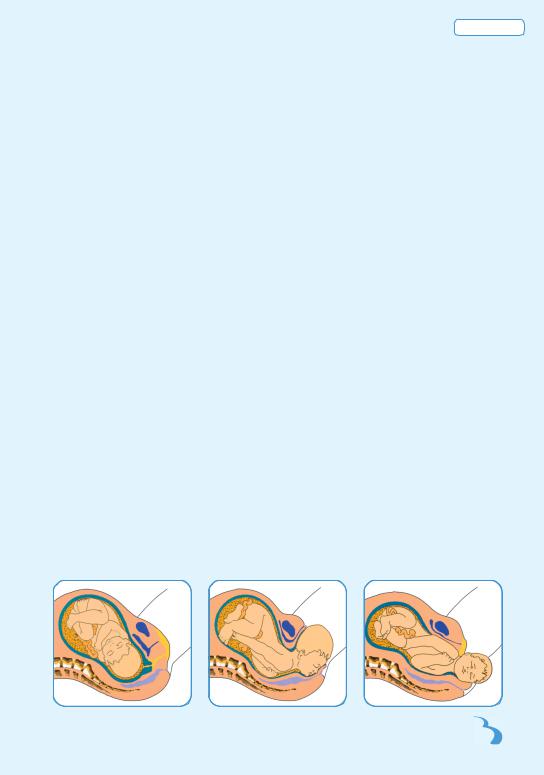
Warning / Caution
•For hygenic reasons, EPI·NO Delphine and Delphine Plus are intended as single user devices; meaning only one woman should use the device.
•Childbirth training should not begin more than three weeks before the expected delivery date or as established by your physician or midwife.
•Do not use EPI·NO Delphine or
Delphine Plus for more than two pregnancies, or after the end of its recommended life span ( as shown on the label on the hand pump ) .
•Stop exercising with EPI·NO Delphine or Delphine Plus if you experience any pain.
•Before you use EPI·NO Delphine or Delphine Plus for the first time or if it has not been used for more than four weeks, you should inflate the balloon by first closing the air release valve, then squeezing the hand pump about ten times in sequence.
Open the air release valve to let the air out and return the balloon to its original
shape. This allows you to test the device. If your EPI·NO Delphine or Delphine Plus is not in perfect working order contact your supplier before use.
English
•We recommend you thoroughly wash
your hands with soap and water before each use of EPI·NO Delphine or
Delphine Plus . Please strictly observe
the guidelines for cleaning and disinfecting EPI·NO Delphine and Delphine Plus ( see section “Cleaning and Disinfecting” ) .
•Only use water-based lubricants.
Do not use lubricants containing oils or essential components as these can damage the balloon.
•Take care not to damage the balloon with pointy or sharp-edged items (e.g. rings, fingernails, etc.).
•When the balloon is inserted and inflated, you should not move excessively to avoid uncontrolled movements of the balloon.
•EPI·NO Delphine or Delphine Plus must not be used under water ( e.g. in the bath ) as penetrating water can impair function.
•Store EPI·NO Delphine and Delphine Plus carefully to avoid extended exposure to direct sunlight.
•EPI·NO Delphine and Delphine Plus should be kept out of reach of children !
EPI·NO-Birth Preparation
EPI·NO Delphine and Delphine Plus Birth Trainer are designed to be used by
5
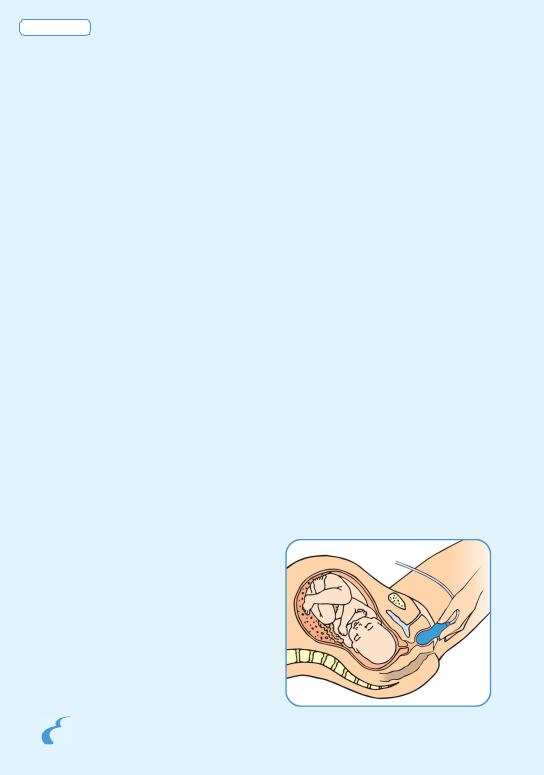
English
both primiparae, ( mothers expecting their first child ), as well as by multiparae, where no medical reasons make it’s use inappropriate ( see section on “Contraindications” ) .
If your physician or your midwife, has not
recommended a specific training regimen, you should begin EPI·NO Delphine or Delphine Plus training 3 weeks before
your expected delivery date.
Through the gradual strengthening and stretching of the muscles and tissue, the entire pelvic floor will become stronger and more elastic.
This reduces the chance of a tear of the perineum or the need for an episiotomy during delivery.
If the perineum remains undamaged, the muscles and tissue can more easily recover following childbirth. Furthermore, any unpleasant after-effects, such as scars, prolapse or incontinence may be avoided.
Instructions
Select a pleasant place for your exercise with EPI·NO Delphine or Delphine Plus.
Ensure you are not disturbed. Choose a comfortable position ( e.g. semi reclined ) . With time and practice you will find the most appropriate position for you.
Under some circumstances you may also discover a suitable position for giving birth to your child.
Close the air release valve before introducing the balloon into the vagina. In some cases it may be necessary to lubricate the tip of the balloon ( see section “Warning / Caution” ) .
Three Stage Birth Program
1. Exercise the Pelvic Floor Muscles
Insert about two thirds of the balloon into the vagina ( see illustration ). By gently gliding the balloon up and down you will obtain a feeling of the elasticity within the perineal area. Remain relaxed during your exercises even if the training is unfamiliar at the beginning.
Experience has shown that a certain routine is achieved after about three training sessions. You will develop a feeling for the best routine for you.
While tensing the pelvic floor muscles try to draw the balloon upward for about 10 seconds. Then relax for 10 seconds and repeat this exercise for a minimum of 10 minutes. Gently touch the balloon and feel it moving upwards with the muscle tension. This way you can check that you are exercising correctly.
EPI·NO Delphine Plus Only: Observe the needle on the pressure display before and after tensing the pelvic floor muscles. You may not notice any appreciable pressure difference when you first commence your exercises. However, after a few days you will begin to achieve your first results.
6

2. Stretch the Perineum
Slowly inflate the balloon, as far as your personal comfort level permits ( a slight stinging sensation indicates stretch ) . Leave the inflated balloon in the vagina for a period of about ten minutes.
With this exercise the skin and muscles, the perineal area, as well as the birth canal are gradually and gently expanded.
The balloon size should be increased
gradually from one training session to the next. However, you should always stay within your personal comfort level.
By operating the air release valve you can reduce the balloon size at any time. The
reading on the pressure display ( only
EPI·NO Delphine Plus ) does not indicate the balloon size.
Do not rely on the pressure readings on the pressure display in this training phase - simply trust your body feeling.
3. Prepare for Birth
At the end of the stretch, relax your pelvic floor muscles and allow the balloon to gently expel itself from the vagina. This simulation of birth allows you to experience the sensation of birth ahead of time.
English
You can determine your training progress with the measurement template included, or use a tape measure ( A measurement of the balloon size is possible only outside the body ) .
Further Information
Sometimes the pelvic floor tension may be intensified when letting the balloon glide out. In the first training session we recommend you reduce the size of the balloon by letting a little air out to become familiar with this exercise.
As your training progresses you will find it easier to let the balloon glide out. Gradually increase the balloon diameter, building your confidence and strength.
Each session should not last longer than 30 minutes and not be performed more than twice a day.
Clean your EPI·NO Delphine and
Delphine Plus according to the method described ( see section on “Cleaning and Disinfecting” ) at the end of each training session.
Each training session reduces the risk of damage to your perineum during childbirth. Optimum training is achieved when the balloon has reached a diameter of 8- 10 cm ( 3-4 inches ) and can be glided out while inflated after about two weeks of training.
Once you have reached a balloon diameter of 8-10 cm ( 3-4 inches ) you should then focus on training the pelvic floor and practising for the delivery phase.
It is not recommended, to further increase the balloon size. A diameter of 10 cm ( 4 inches ) represents the approximate space needed for delivering your baby.
7
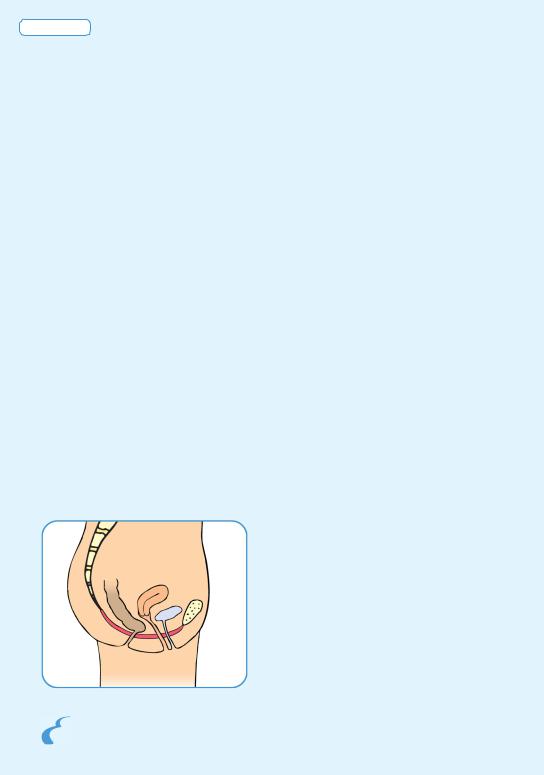
English
Occasionally the balloon may be expelled prematurely ( e.g. because of excess lubricant ) . Avoid this by holding it in place or closing your legs.
You can also feed the balloon in slightly further. Even if the balloon slips totally into the vagina and touches the cervix, it can be returned to the correct position by pulling slightly at the base of the balloon.
If any complications should arise when using the EPI·NO Delphine or Delphine
Plus please consult your physician or midwife immediately.
Postnatal Pelvic Floor
Muscle Training Program
( Note: Only EPI·NO Delphine Plus offers biofeedback )
Before commencing EPI·NO Delphine Plus postnatal pelvic floor muscle training any vaginal discharge should have subsided and any perineal injuries allowed to heal.
We recommend using EPI·NO Delphine Plus not before 3 weeksafter yourdelivery.
Pelvic floor muscles (red)
We also recommend the exercises should continue for a minimum of 3 weeks ( usually postnatal training extends for 4 to 6 months ) .
Typical symptoms of weakened pelvic floor muscles are:
•Leaking of urine when coughing, sneezing, climbing stairs, and carrying heavy objects.
•Constant urge to urinate, even with an empty bladder.
•A strong feeling of downward pressure.
•Prolapse of the vaginal tissues or the uterus.
•Involuntary loss of wind ( flatus ) and stool ( anal incontinence ) .
Select a pleasant place for your exercise with EPI·NO Delphine Plus. Ensure you
are not disturbed.
Choose a comfortable position ( e.g. semi reclined ) . With time and practice you will find the most appropriate position for you.
Take relaxed, regular breaths during exercise. Try to relax your buttocks, thighs and stomach. We recommend exercising 10 to 20 minutes per day.
Getting Started
Open the air release valve, squeeze the air out of the balloon with your hand, then close the air release valve. The balloon will now remain in this deflated shape. Lubricating the top half of the balloon will facilitate insertion ( see section “Warning / Caution” ) .
Hold the balloon near the end and introduce it about two thirds of the way into the
8

vagina. Take your time, as the vagina may be dry and tender.
Relax your pelvic floor. Now inflate the balloon to the point that you are aware of its presence ( for most women the pressure gauge will show 2 ) . Should the pressure be too strong, you can reduce it at any time by opening the air release valve.
Perineal Draw Up Exercise
While tensing the pelvic floor muscles try to draw the balloon upward for about 10 seconds. Then relax for 10 seconds and repeat this exercise again.
Gently touch the balloon and feel it moving upwards with the muscle tension. This way you can check that you are exercising correctly.
EPI·NO Delphine Plus only: Observe the needle on the pressure display before and after tensing the pelvic floor muscles:
See “Training Progress Table”.
You may not notice any appreciable pressure difference when you first commence your exercises. However, after a few days you will begin to achieve your first results.
English
Further exercises with EPI·NO Delphine Plus
The following exercises give you a variety
of training possibilities. Follow the instructions for use or train with the EPI·NO
Delphine Plus exercises recommended by your physician or midwife.
Follow the instructions for inserting your
EPI·NO Delphine Plus ( see section ”Postnatal Pelvic Floor Muscle Training Program ) .
During all exercises you can follow the needle on the pressure display and check your pelvic floor strength.
Training Progress Table:
Pressure difference |
Comment |
|
( tensed - relaxed ) |
|
|
|
|
|
< 1 |
Should be improved |
|
1 |
- 2 |
You are getting there |
3 |
– 4 |
Already very good |
> 4 |
Excellent |
|
“Pelvis Rock”
Lie on your back and bend your knees with your feet firmly on the ground, and pressure on your heels. Alternately raise your right and left hip and repeat this 2-3 times.
“Around the Clock”
Assume the same starting position as for “Pelvis Rock”. Imagine there is a clock under your pelvis. Follow the movement of the hands, first clockwise and then counter clockwise. The movements should be so smooth that the pelvis seems to continuously rotate.
9

English
“Long Legs”
Lie on your back and stretch your legs. The entire spinal column should touch the floor. Move your chin towards your chest so that the neck is stretched.
Alternately push your right and left heel away as if you want to elongate your legs. Simultaneously draw your toes towards your body.
Cleaning and Disinfecting
Caution
•Make sure the pump does not get wet during cleaning and disinfecting because water may damage the interior.
•Follow cleaning and disinfecting instructions prior to first use and immediately after every subsequent use.
•If EPI·NO Delphine or Delphine Plus is not used for more than 7 days, repeat cleaning and disinfecting prior to use.
Before first usage and immediately after every use, clean EPI·NO Delphine or
Delphine Plus thoroughly following these guidelines:
•Inflate the balloon by pressing the pump about 10 times.
•Carefully clean the balloon with soap and warm water ( minimum 40°C / 104°F; 1-2 minutes ) . Take care not to wet the pump as water may damage the in-
terior. Rinse the balloon under warm running water. Let EPI·NO Delphine or Delphine Plus dry on a clean, smooth surface.
•Disinfect EPI·NO Delphine or Delphine Plus by wiping it with 70% Isopropyl from your pharmacy. Use a cotton pad or medical alcohol pads like those supplied in your starter set.
•Only when completely dry place EPI·NO Delphine or Delphine Plus into the pouch, close zip and store in a clean, dry place.
We wish you success with your EPI·NO Delphine or Delphine Plus training.
10
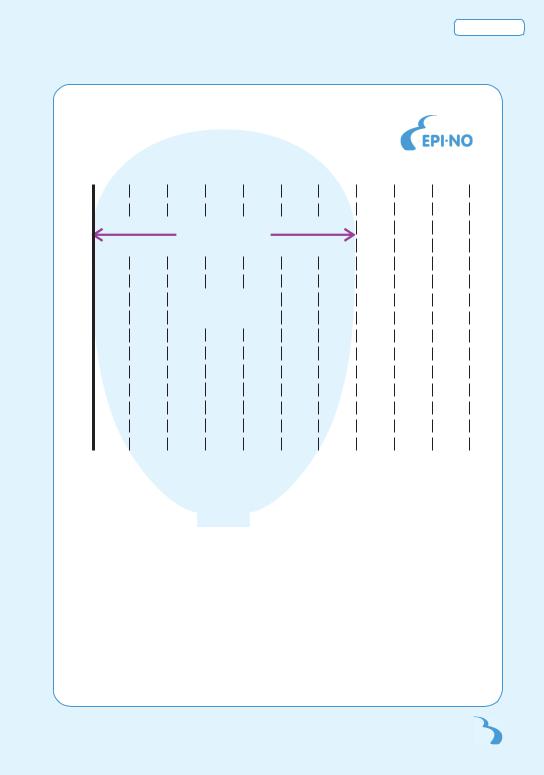
English
Measurement Template
= 7 cm
( Example )
0 cm 1 |
2 |
3 |
4 |
5 |
6 |
7 |
8 |
9 |
10 |
|
|
|
|
|
|
|
|
|
C |
|
|
|
|
|
|
Diameter |
Circumference |
||
To mesaure the diameter of the inflated |
|
|
in cm |
in cm |
|||||
|
|
5,0 |
→ |
16 |
|||||
balloon, align the balloon with the solid line |
|
|
5,5 |
→ |
17 |
||||
( 0 cm ) on the left of the template card as |
|
|
6,0 |
→ |
19 |
||||
shown in the diagram. |
|
|
|
|
6,5 |
→ |
20 |
||
The horizontal red arrows ( example 7 cm) |
|
|
7,0 |
→ |
22 |
||||
|
|
7,5 |
→ |
24 |
|||||
indicate the widest point of the balloon. |
|
|
8,0 |
→ |
25 |
||||
The Conversion Table opposite indicates |
|
|
8,5 |
→ |
27 |
||||
|
|
9,0 |
→ |
28 |
|||||
the Circumference value for each Dia- |
|
|
9,5 |
→ |
30 |
||||
meter measurement. |
|
|
|
|
|
10,0 |
→ |
31 |
|
11
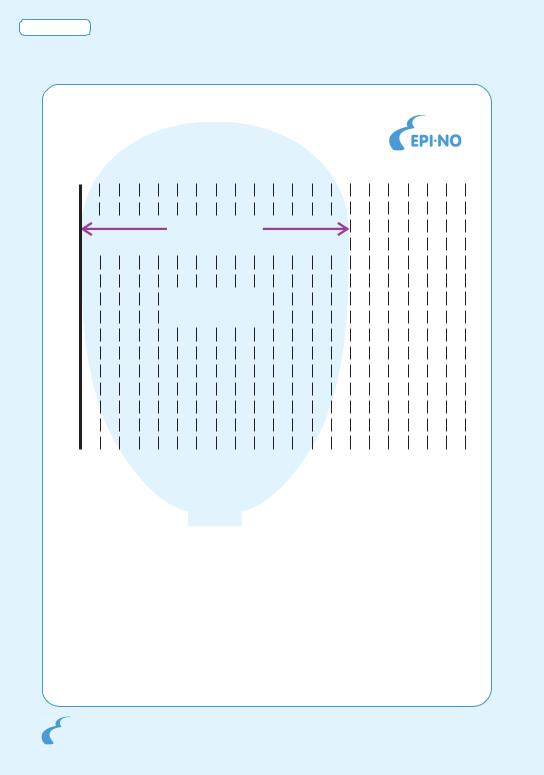
English
Measurement Template
= 2.8 inches
( Example )
0 |
0.2 |
0.4 |
0.6 |
0.8 |
1.0 |
1.2 |
1.4 |
1.6 |
1.8 |
2.0 |
2.2 |
2.4 |
2.6 |
2.8 |
3.0 |
3.2 |
3.4 |
3.6 |
3.8 |
4.0 |
inches
To mesaure the diameter of the inflated balloon, align the balloon with the solid line ( 0 inches ) on the left of the template card as shown in the diagram.
The horizontal red arrows ( example 2.8 inches ) indicate the widest point of the balloon.
The Conversion Table opposite indicates the Circumference value for each Diameter measurement.
|
|
C |
Diameter |
Circumference |
|
in inches |
|
in inches |
2.0 |
→ |
6.3 |
2.2 |
→ |
6.9 |
2.4 |
→ |
7.5 |
2.6 |
→ |
8.2 |
2.8 |
→ |
8.8 |
3.0 |
→ |
9.4 |
3.2→ 10.0
3.4→ 10.7
3.6 |
→ |
11.3 |
3.8 |
→ |
11.9 |
4.0 |
→ |
12.6 |
12

13

Deutsch
Produktbeschreibung
Die Beckenbodentrainer zur Geburtsvorbereitung und Rückbildung EPI·NO Delphine und Delphine Plus wurden in en-
ger Zusammenarbeit mit Gynäkologen, Hebammen und Schwangeren mit größter Sorgfalt entwickelt.
Sie bestehen aus (1) einem anatomisch geformten aufblasbaren Silikonballon, (2)
einer Handpumpe, ( 3) einem Spiegel ( EPI·NO Delphine ) oder einer Druckanzeige ( Delphine Plus ), ( 4 ) einem
Luftablassventil sowie ( 5 ) einem Zuführungsschlauch.
EPI·NO Delphine
EPI·NO Delphine Plus
Indikation
EPI·NO Delphine und Delphine Plus sind als Beckenbodentrainer zur Geburtsvor-
bereitung und Rückbildung patentiert. Mit
EPI·NO Delphine und Delphine Plus erschliessen sich Ihnen zwei Anwendungsgebiete mit verschiedenen Übungsmöglichkeiten.
Anwendungsgebiete
Erstens, mit EPI·NO Delphine und Delphine Plus können Sie ihren Beckenboden schonend auf die Geburt vorbereiten:
Geburtsvorbereitung
Zweitens, mit den EPI·NO Delphine Plus
Übungen unterstützen Sie optimal die nachgeburtliche Regeneration:
Beckenbodentraining
Übungen mit EPI·NO
Drei Stufen Geburtsvorbereitungsprogramm
( EPI·NO Delphine und Delphine Plus )
•Beckenbodenübungen
Zur Stärkung der Beckenbodenmuskulatur vor der Geburt.
•Dehnungsübungen
Zur schrittweisen Dehnung des Scheidenausgangs, des Damms und der Vaginalmuskulatur vor der Geburt.
•Simulationsübungen
Zum Einüben der Austreibungsperiode.
Nachgeburtliches Beckenbodentraining
( Hinweis: Nur EPI·NO Delphine Plus bietet Biofeedback )
14

Beckenbodenübungen
Zur Stärkung der Beckenbodenmuskulatur nach der Geburt.
Deutsch
und nachgeburtlichen Beckenbodenübungen mit EPI·NO Delphine oder Delphine Plus sind jedoch in jedem Fall hilf-
reich.
Alle Übungen können Sie zu Hause und ohne fremde Hilfe ausführen und das Training ganz auf Ihre persönlichen Bedürfnisse abstimmen.
Klinische Studien sowie unzählige Erfah-
rungsberichte von Anwenderinnen haben die Wirksamkeit des Trainings mit EPI·NO Delphine und Delphine Plus eindrucks-
voll bestätigt.
Bei den Dehnungsübungen zur Geburts-
vorbereitung zeigt der Druckanzeiger
( nur EPI·NO Delphine Plus ) nicht den Ballonumfang an. Ihren Trainingsfortschritt stellen Sie vielmehr anhand der rückseitig abgebildeten Schablone oder mit einem Maßband fest.
Beim Beckenbodentraining hingegen, zeigt sich der Trainingserfolg durch den Aus-
schlag des Druckanzeigers ( nur EPI·NO Delphine Plus ) , dessen Wert Sie einfach
ablesen können.
Wenn bei Ihnen eine Kaiserschnittgeburt geplant ist, sind die Dehnungsübungen zur Geburtsvorbereitung nicht sinnvoll. Die vor
Gegenanzeigen
EPI·NO Delphine und Delphine Plus dürfen Sie nicht anwenden:
•Bei ungewöhnlicher Lage des Kindes bzw. bei Befundrisiken, die eine vaginale Entbindung unmöglich machen ( z.B. Placenta praevia ) .
•Bei Gefahr einer Infektion durch aufsteigende Keime ( z.B. vorzeitiger Blasensprung, Scheideninfektion)
•Bei nicht abgeheilten Verletzungen im Genitalbereich.
•Unter Einfluss von Alkohol oder Drogen.
•Bei vaginalen Blutungen.
•Bei bösartigen Erkrankungen im Genitalbereich (z.B. Gebärmutterhalskrebs)
Nur unter Aufsicht eines Arztes oder einer Hebamme dürfen Frauen EPI·NO Delphine und Delphine Plus anwenden:
•Bei Nervenschädigungen und anderen, das Schmerzempfinden im Genitalbereich einschränkenden Erkrankungen
•Bei Querschnittslähmung.
•Bei Multipler Sklerose.
•Bei Einnahme von Schmerzmitteln, die das Schmerzempfinden im Genitalbereich einschränken.
•Bei ausgeprägter Venenerweiterung am Scheideneingang ( Krampfadern ) .
15

Deutsch
Bitte sprechen Sie vor der Anwendung von
EPI·NO Delphine oder Delphine Plus mit Ihrem Arzt oder Ihrer Hebamme.
Sicherheitshinweise
•Um eine Verschleppung von Keimen auszuschliessen, dürfen EPI·NO Delphine und Delphine Plus nur von einer Frau angewendet werden.
•EPI·NO Delphine und Delphine Plus frühestens drei Wochen vor dem errechneten Geburtstermin anwenden, oder wie mit Ihrem Arzt oder Hebamme besprochen.
•EPI·NO Delphine und Delphine Plus nicht bei mehr als zwei Schwangerschaften und nicht nach Ablauf des Haltbarkeitsdatums einsetzen.
•Beenden Sie die Übungen mit EPI·NO Delphine und Delphine Plus, wenn Sie dabei Schmerzen verspüren.
•Vor der ersten Anwendung oder nach einerAnwendungspause von mehr als vier Wochen, sollten Sie den Ballon , nach dem Schliessen der Luftablassschraube, durch ca. zehnmaliges Zusammendrücken des Handballs, aufblasen.
Öffnen Sie nun die Luftablassschraube, um den Ballon wieder in seine Ausgangsform zu bringen.
So können Sie das Gerät auf Unversehrt-
heit prüfen und sich mit dem Umgang von EPI·NO vertraut machen. Sollte das
Gerät Beschädigungen aufweisen, ist von einer Anwendung abzusehen.
•Wir empfehlen, die Hände vor jedem Gebrauch von EPI·NO Delphine und Delphine Plus gründlich mit Wasser und Seife zu waschen.
Halten Sie sich bei der Reinigung und Desinfektion von EPI·NO Delphine und Delphine Plus an die Empfehlungen ( siehe Abschnitt „Reinigung und Desinfektion“ ) .
•Verwenden Sie auschließlich Gleitmittel auf Wasserbasis.
Verwenden Sie keine Gleitmittel die Öle oder ätherische Zusätze enthalten, da diese den Ballon schädigen können.
•Achten Sie darauf, dass der Ballon nicht durch spitze oder scharfkantige Gegenstände (z.B. Ringe, Fingernägel etc.) beschädigt wird.
•Mit eingeführten und gleichzeitig aufgedehnten Ballon, sollten Sie Lageänderungen nur sehr behutsam durchführen oder vermeiden, um keine unkontrollierten Ballonbewegungen auszulösen.
•EPI·NO Delphine oder Delphine Plus darf nicht unter Wasser angewendet werden ( z.B. in der Badewanne ), da eindringendes Wasser die Funktionsfähigkeit des Geräts beeinträchtigen kann.
•EPI·NO Delphine oder Delphine Plus sollten so gelagert werden, dass eine längere direkte Sonneneinstrahlung vermieden wird.
•EPI·NO Delphine oder Delphine Plus unzugänglich für Kinder aufbewahren !
16

Geburtsvorbereitung mit EPI·NO
EPI·NO Delphine oder Delphine Plus können Sie, sofern nicht medizinische Gründe dagegen sprechen ( siehe Abschnitt „Gegenanzeigen ) , sowohl bei Ihrer ersten als auch bei weiteren Schwangerschaften anwenden.
Sofern Ihnen Ihr Arzt oder Ihre Hebamme die Anwendung nicht anders empfohlen hat, sollten Sie mit den Übungen 3 Wochen vor dem errechneten Geburtstermin beginnen.
Durch das schrittweise Dehnen und Stärken der Muskulatur und des Gewebes wird der gesamte Beckenbodenbereich gestärkt und elastischer.
Somit wird die Wahrscheinlichkeit deutlich verringert, dass es während der Geburt zum Dammriss kommt oder dass ein Dammschnitt erforderlich wird.
Bleibt der Damm unverletzt, bedeutet dies für die Zeit nach der Entbindung, dass sich Muskeln und Gewebe leichter und dauerhafter regenerieren können. Zudem können Sie so äusserst unangenehme Nachfolgebeschwerden wie Narben, Senkungen oder Inkontinenz vermeiden.
Anwendungshinweise
Wählen Sie für Ihre Übungen mit EPI·NO Delphine oder Delphine Plus einen für
Sie angenehmen Platz und gönnen Sie sich für jede Trainingseinheit ca. 30 Minuten Ruhe und Entspannung. Sorgen Sie dafür dass Sie nicht gestört werden. Nehmen Sie zu Trainingsbeginn eine bequeme Haltung ein ( z.B. liegend mit aufgerichtetem Oberkörper ) .
Im Laufe der Zeit werden Sie durch Ausprobieren die für Sie angenehmste Körper-
Deutsch
haltung beim Training herausfinden. Dabei können Sie unter Umständen schon eine für Sie geeignete Geburtsposition kennenlernen.
Bevor Sie den Ballon einführen, schliessen Sie bitte die Luftablassschraube. In vielen Fällen kann das Benetzen des Ballons mit einem Gleitmittel ( maximal bis zur Taille ) die Einführung erleichtern ( siehe Abschnitt „Sicherheitshinweise“ ) .
Drei Stufen Geburtsvorbereitungsprogramm
1. Beckenbodenübungen
Fassen Sie nun den Ballon am Schlauchansatz an und führen sie ihn zu etwa zwei Drittel in die Scheide ein ( siehe Abbildung ) .
Durch leichte Aufund Abbewegungen des Ballons bekommen Sie ein Gefühl für die Dehnbarkeit im Dammbereich. Bleiben Sie bei den Übungen locker, auch wenn das Training am Anfang noch ungewohnt ist.
Die Erfahrung zeigt, dass sich nach etwa drei Übungseinheiten eine gewisse Routine einstellt und Sie ein Gefühl für die für Sie optimale Anwendung entwickeln.
Versuchen Sie nun, den Ballon für ca. 10 Sekunden durch ein Anspannen der
17
